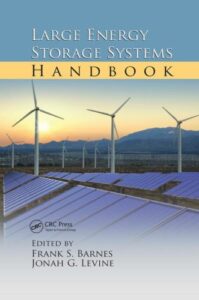Large Energy Storage Systems Handbook
Large Energy Storage Systems Handbook
Large Energy Storage Systems Handbook is largely the result of the efforts by a group of students at the University of Colorado Boulder who were interested in making an increasing penetration of renewable energy production useful on the electric power grid. This initial work attempted to include issues of reliability, siting, economics, and efficiency. Over time this work looked at energy storage through the lens of increasing penetration of renewable generation relative to economic and carbon impacts to our power grids. This work began with a focus on a utility scale, and we have added significant contributions from others who have been working in the field in order to cover important topics more completely.
You can also Wind Power Generation and Wind Turbine Design
Many of the issues that were raised years ago on the economics and the difficulties siting energy storage are still being raised today. We believe that in spite of a number of studies to the contrary, energy storage for the generation of electric power will be important when large amounts of wind, solar, and other renewable energy sources are added to electrical power grids so that these resources can provide a significant fraction of the total electrical energy on the system.
Large Energy Storage Systems Handbook Content
- Preface
![Large Energy Storage Systems Large Energy Storage Systems]()
- Acknowledgments
- Editors
- Contributors
- 1. Applications of Energy Storage to Generation and Absorption of Electrical Power
- 2. Impacts of Intermittent Generation
- 3. Pumped Hydroelectric Energy Storage.
- 4. Underground Pumped Hydroelectric Energy Storage.
- 5. Compressed Air Energy Storage.
- 6. Battery Energy Storage.
- 7. Solar Thermal Energy Storage.
- 8. Natural Gas Storage
Energy storage currently plays an important role in the electric utility industry. In addition to the benefits derived by utility companies from arbitrage, energy storage currently contributes to reliability, efficiency, power quality, transmission optimization, and black-start functions. Although different end functions of energy storage affect production, the sole purpose of storage is to increase operational flexibility


Comments are closed.